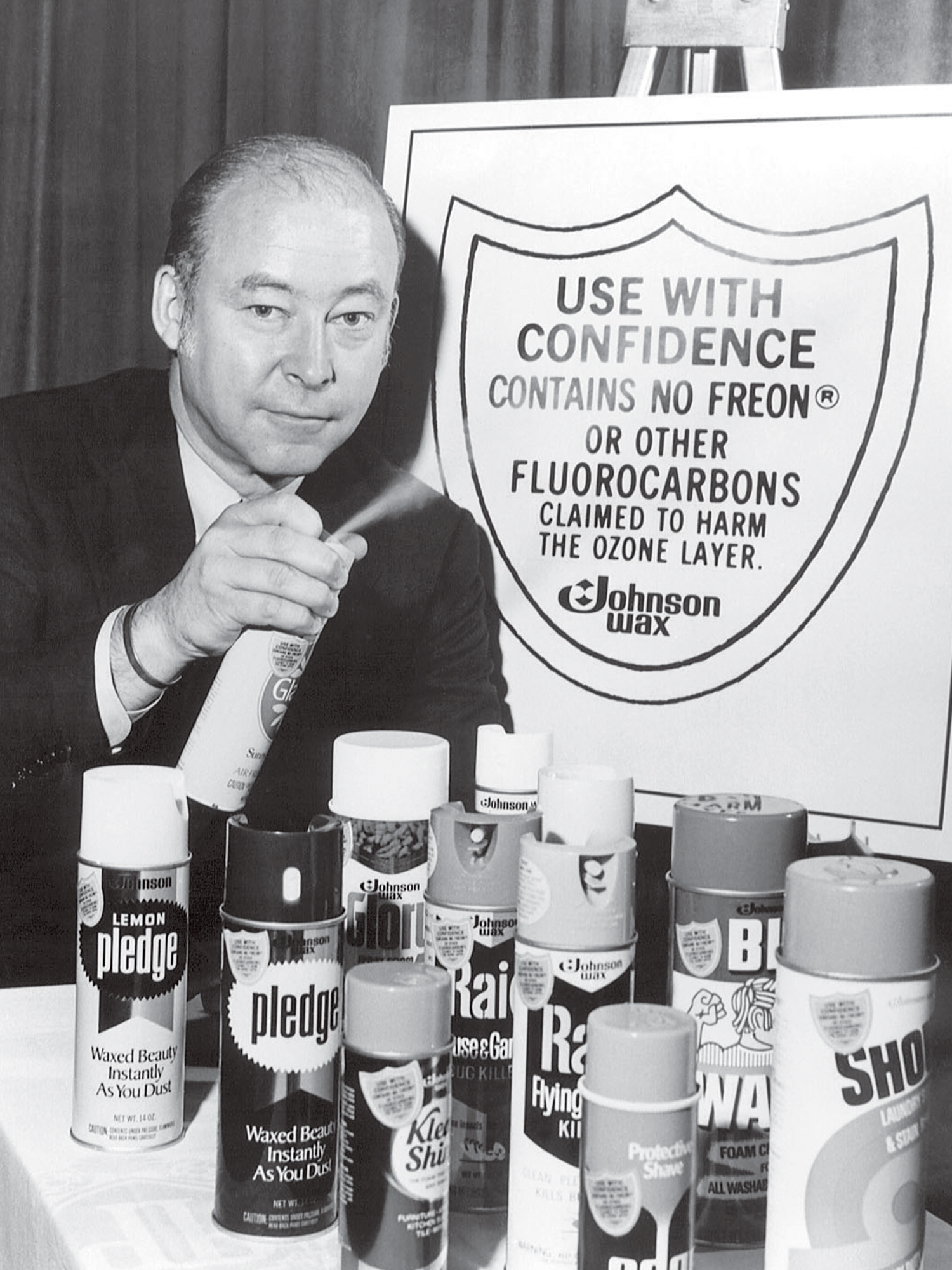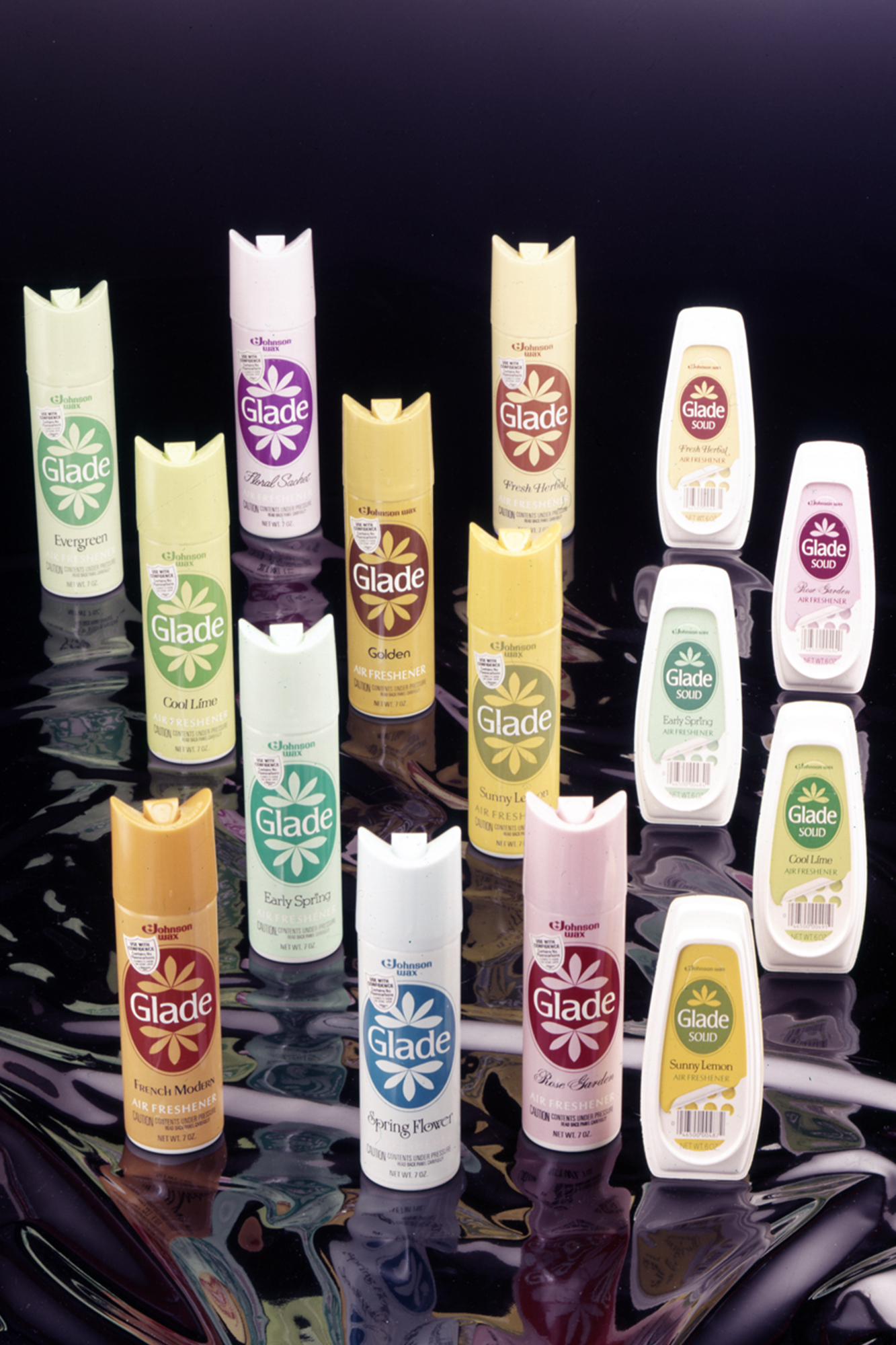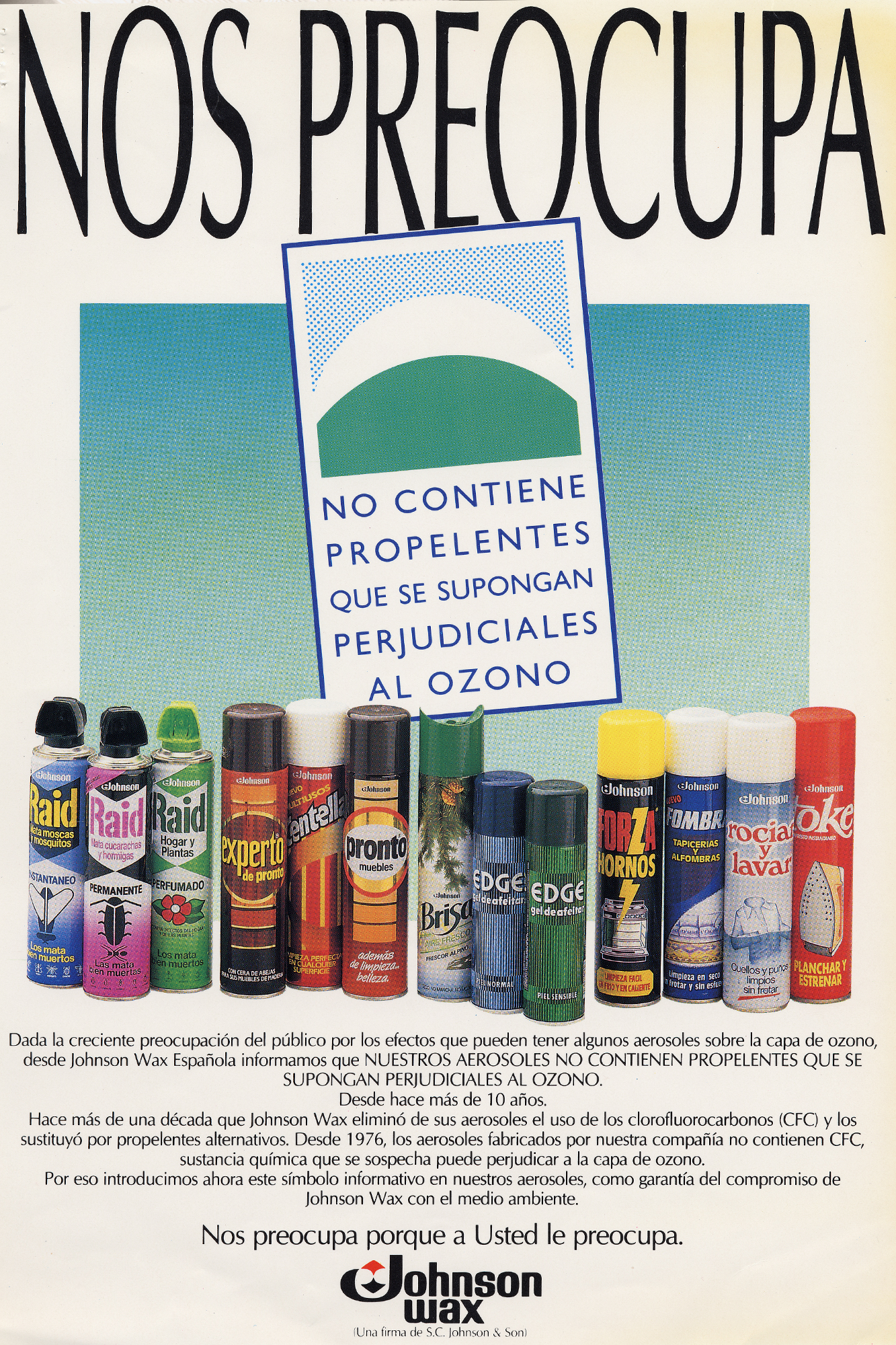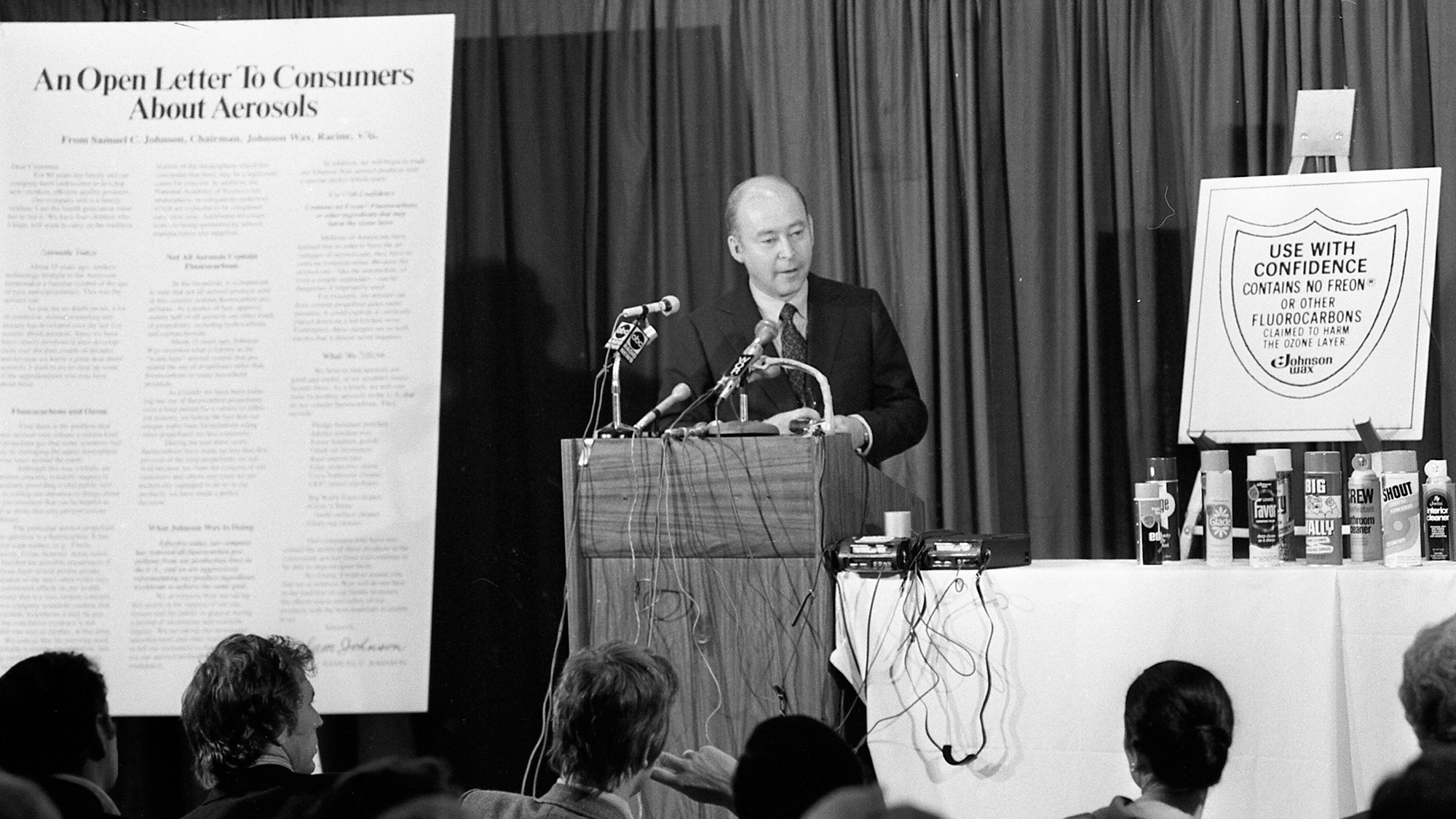Taking chlorofluorocarbons (CFCs) Out of Aerosols How Sam Johnson Led SC Johnson to Environmental Activism
But that was not always the case. In fact, SC Johnson was one of the first companies to take a major, public stand against an ingredient that was harming the environment. And we did it more than four decades ago, led by the vision of fourth-generation leader Sam Johnson.
Leading the Way for Socially Responsible Companies
In 1975, SC Johnson shocked the chemical industry and set new heights for environmental leadership when we became the first company to ban chlorofluorocarbons (CFCs) from our aerosol products worldwide.
It was a stunning move, especially since some people felt concerns about chlorofluorocarbon (CFC) gas required more study. One executive argued that SC Johnson should wait for a longer-term study that would settle the science, before acting on “emotion.”
When my father decided to take chlorofluorocarbons (CFCs) out of our products, he did because it was the right thing to do at the right time.
But then-CEO Sam Johnson felt the evidence was clearly mounting that chlorofluorocarbons (CFCs) affected the ozone layer, and he believed action was warranted. As he said at the time, “Our own company scientists confirm that as a scientific hypothesis, [the idea that fluorocarbon propellants in some aerosol containers might be causing ozone depletion] may be possible.”
So Sam took action. “Effective today,” he announced on June 17, 1975, “our company has removed all fluorocarbon propellants from our production lines.”
That was more than a decade before the 1987 Montreal Protocol, the international treaty designed to reduce the production and use of chemicals that contribute to depletion of the ozone layer. It was also three years before the United States banned the use of chlorofluorocarbons (CFCs).
Environmental Policy to Protect the Planet
The move caused SC Johnson to pull out of the aerosol business in several countries where we did not yet have alternatives to chlorofluorocarbons (CFCs) available. We also walked away from our antiperspirant business in the U.K., where we were the market leader at the time.
The action also put us in the cross-hairs of executives in our industry, who accused Sam of being reckless and irresponsible. He used to tell a story of one CEO standing up during a meeting and yelling at him that he was going to “ruin” the entire industry.
But Sam stood his ground.
“When my father decided to take chlorofluorocarbons (CFCs) out of our products, he did because it was the right thing to do at the right time,” said Fisk Johnson, Chairman and CEO of SC Johnson. “This decision is one of many choices SC Johnson has made in its long history to do what is right for people and the planet.”

“Our customers who have welcomed the utility of these products in the convenient aerosol form will continue to be able to depend upon them.” – Sam Johnson
Explaining the Earth-friendly Reasons for Our Actions
SC Johnson did not make its chlorofluorocarbons (CFCs) move quietly. Rather, we took an activist approach – announcing the change and asking the industry to come along with us. In fact, Sam took out full-page ads to explain the decision. It was a master class in ingredient responsibility and education.
Along with communicating our decision, we shared highlights of the science that backed it up. We also clarified that not all aerosols contained chlorofluorocarbons (CFCs), meaning many products could still be used without concern.
After all, aerosols were then and continue to be a very effective format for countless helpful products across industries. We did not want to scaremonger, or cast doubt on our industry or other companies. We simply wanted to explain our decision and the thinking behind it.
Our 1975 ad in The New York Times explained: “We are taking this action in the interest of customers and the public in general during a period of uncertainty and scientific inquiry. We plan to change the labels of our containers to carry the following statement: Use with confidence. Contains no freon or other fluorocarbons claimed to harm the ozone layer.”






But his choice was good for the business, too. Company scientists found that propane and isobutane – among the cheapest gases – offered a winning substitute for CRCs. SC Johnson ultimately saved millions of dollars on aerosol production and was well-established in chlorofluorocarbons (CFCs)-free products by the time competitors caught up.
This win for the environment and for business proved the benefit of Sam’s commitment to treating economic and environmental concerns as interdependent. It is a commitment we still act on today.
We continue to lead the way in responsible raw material choices, through our Greenlist™ process. We make sure people know what is inside our products, with industry-leading ingredient disclosure. And, when needed, we make the right environmental choices, even if they are not profitable.
Most of all, we continue to let science steer our way. We will not always make the right decisions, but we will always try to act based on the best research available – and when we think it is needed, we will act even if others do not.